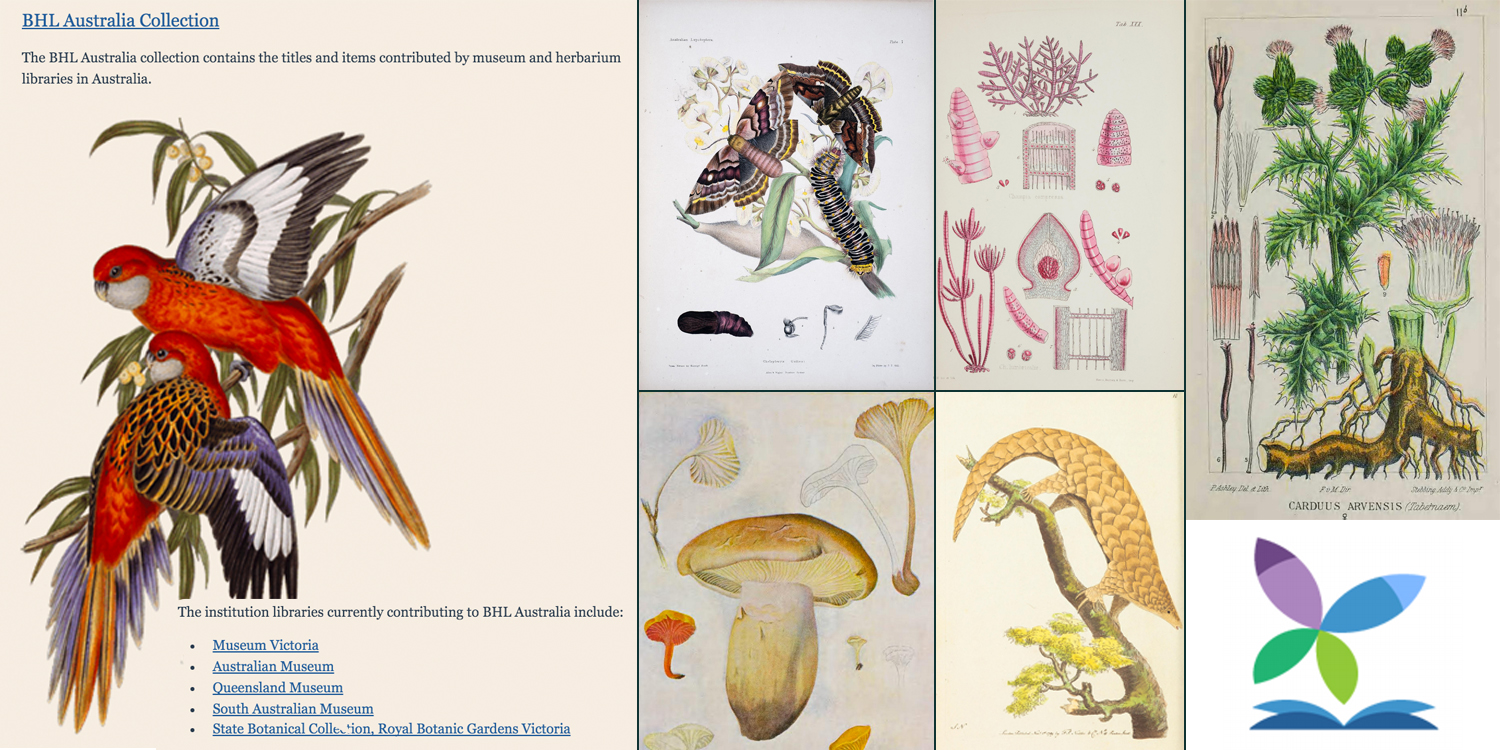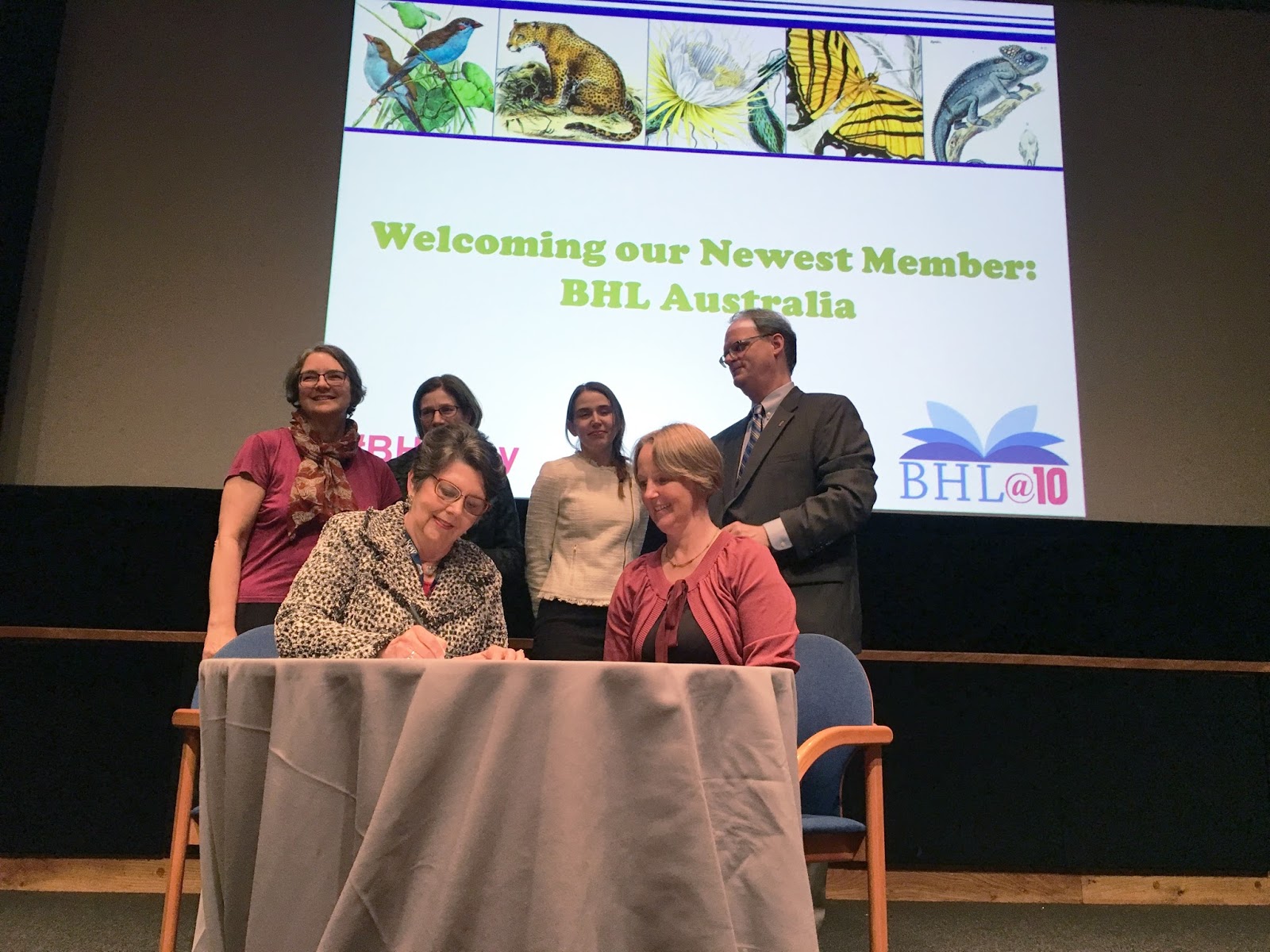The Biodiversity Heritage Library is pleased to welcome BHL Australia as a new Member. BHL Australia was founded in 2010 by the Atlas of Living Australia with Museum Victoria as the Lead Agency undertaking the daily work of running the project. To date, five institutions participate in the BHL Australia program, including Museum Victoria, Australian Museum, Queensland Museum, South Australian Museum, and Royal Botanic Gardens Victoria. Over the past six years, these institutions have contributed journal titles, rare books, monographs and field notebooks to the BHL collection, amounting to over 156,000 pages. BHL Australia represents BHL’s 16th Member.
A three-way Memorandum of Understanding has been signed between BHL, the Atlas of Living Australia and Museum Victoria. Dr. Elycia Wallis, Project Lead and Manager of Online Collections at Museum Victoria, will be the official representative to the BHL Members’ Council on behalf of BHL Australia.
As BHL Members, BHL Australia will continue to digitize content from Australian library collections as well as work to establish new partnerships with institutions around the continent. The BHL Australia project team, which includes a Project Coordinator, Digitization Coordinator, Technical Officer, and a group of dedicated digitization volunteers, will continue to provide support, expertise, and guidance to all of the participating institutions as well as the BHL family around the world, ensuring the ongoing growth and success of the BHL program.
“I am personally very excited that BHL Australia has now become a full Member of BHL,” said Project Lead, Dr. Elycia Wallis. “Our Australian project has grown into a great success, and I look forward to the new challenges of actively contributing to the wider governance of the consortium.”
Since 2012, BHL’s consortium has operated within a tiered structure comprised of Members and Affiliates. While Affiliates can contribute content, provide technical services, and participate in select committees, participation at the full Member level allows for greater institutional impact, including the right to vote on strategic directives, help govern the BHL program and use central digitization funds. Those participating at the Member level also commit to an annual fee that helps support BHL’s financial stability.
“BHL Australia has been a key partner in the BHL family for many years and has been integral to the success of our global expansion and technical development,” affirmed Martin R. Kalfatovic, BHL Program Director. “For example, our current website is based on designs developed by the BHL Australia team. We are thrilled to welcome BHL Australia as a Member and look forward to continuing our collaborative efforts to provide free and open access to the world’s biodiversity literature.”
Explore the BHL Australia collection today.
About Atlas of Living Australia
The Atlas of Living Australia is a free, online resource that aggregates biodiversity data and information from a number of sources including museum and herbarium specimen collections; government and university research departments; and citizen science projects small and large. It currently provides access to over 60 million specimen records. The Atlas of Living Australia is federally funded as a part of Australia’s National Research Infrastructure for Australia (NCRIS).
About Museum Victoria
Museum Victoria, located in Melbourne in south-eastern Australia, is Australia’s largest public museum organization. It houses a collection of over 17 million objects, documents, photographs and specimens. It has three public museums: Scienceworks; the Immigration Museum; and Melbourne Museum, which also features the Bunjilaka Aboriginal Cultural Centre. The World Heritage-listed Royal Exhibition Building is situated adjacent to Melbourne Museum. Museum Victoria’s library has a collection that dates back to the founding of the institution in 1854 and beyond.







Leave a Comment